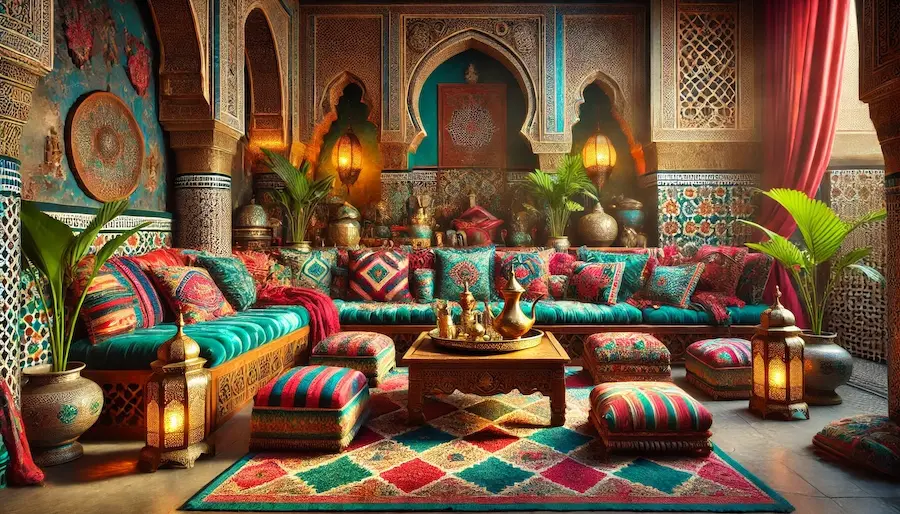A Moroccan living room exudes warmth and vibrancy, blending rich colors, intricate patterns, and handcrafted elements to create an inviting and exotic ambiance.
History and Origins of Moroccan Design
Moroccan interior design reflects the country’s diverse cultural influences, including Berber, Arab, and French traditions. This eclectic mix has evolved over centuries, resulting in a distinctive style characterized by bold colors, geometric patterns, and artisanal craftsmanship. The use of intricate tile work, known as zellige, and ornate wood carvings are hallmarks of Moroccan design, showcasing the nation’s rich artistic heritage.
Key Features of a Moroccan Living Room
- Vibrant Color Palettes: Incorporate deep reds, vibrant blues, and earthy tones to create a lively and warm atmosphere. These colors are often inspired by Morocco’s natural landscapes and bustling souks.
- Intricate Patterns: Utilize geometric designs and motifs in textiles, rugs, and wall decor. Traditional Moroccan patterns add depth and visual interest to the space.
- Handcrafted Furniture: Select pieces featuring ornate carvings and inlays, reflecting Morocco’s artisanal traditions. Materials like wood, metal, and leather are commonly used to craft these furnishings.
- Ambient Lighting: Incorporate lanterns and lamps with intricate metalwork to cast patterned shadows, enhancing the room’s exotic ambiance. These lighting elements contribute to a cozy and intimate setting.
- Plush Textiles: Use richly textured fabrics, such as embroidered cushions and woven throws, to add comfort and luxury. Layering textiles creates a sumptuous and inviting environment.
Applications of Moroccan Design in Living Rooms
- Low Seating Arrangements: Incorporate floor cushions and poufs to create a relaxed and communal seating area, typical of Moroccan interiors. This setup encourages social interaction and comfort.
- Zellige Tile Accents: Feature colorful mosaic tiles on tabletops or as wall art to introduce traditional Moroccan craftsmanship into the space. Zellige tiles are known for their intricate geometric patterns and vibrant colors.
- Indoor Plants: Add greenery to bring a touch of nature indoors, complementing the earthy elements of Moroccan design. Plants like palms or succulents can enhance the room’s aesthetic and contribute to a serene atmosphere.
Considerations When Designing a Moroccan Living Room
- Balance: While embracing bold colors and patterns, maintain harmony by balancing vibrant elements with neutral tones to prevent visual overwhelm. This approach ensures a cohesive and aesthetically pleasing space.
- Authenticity: Incorporate genuine Moroccan artifacts and materials to capture the true essence of the style, supporting artisans and preserving cultural heritage. Handcrafted items add authenticity and uniqueness to the design.
- Functionality: Ensure that the space remains practical for daily use, blending aesthetic appeal with comfort and usability. Thoughtful furniture placement and selection can achieve this balance.
Conclusion
A Moroccan living room combines vibrant colors, intricate patterns, and handcrafted elements to create a warm and inviting space. By thoughtfully integrating these features, you can transform your living area into an exotic retreat that reflects the rich cultural heritage of Morocco.
